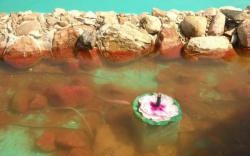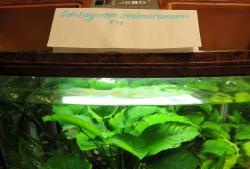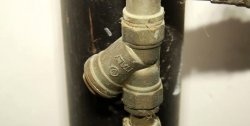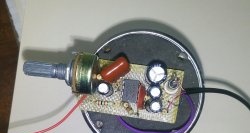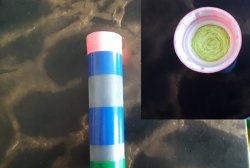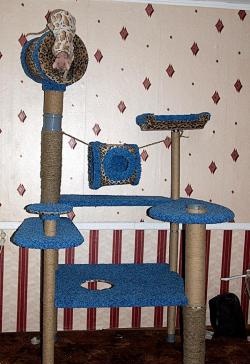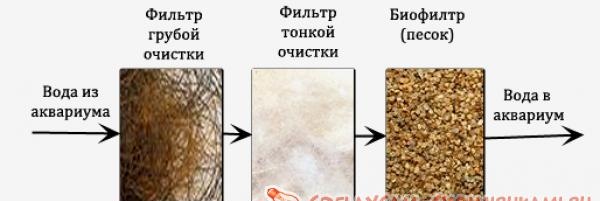
Water is pumped from the aquarium using a special pump or airlift. In an airlift, air bubbles from the compressor serve as a vehicle for water. Making such a filter is labor-intensive and not everyone can do it. But, as practice shows, the problem has a solution and the effect is achieved quite acceptable. The schematic diagram of a simplified filter looks like this:
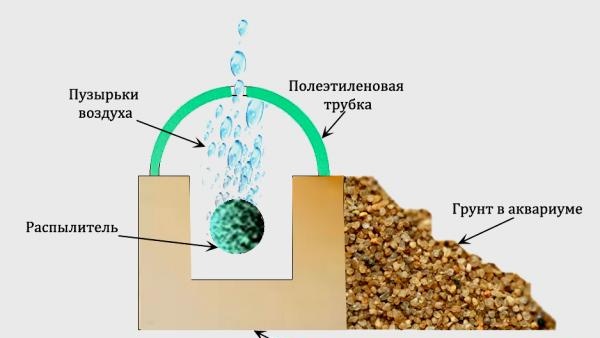
This filter is good because it constantly pumps water through the soil in the aquarium and does not allow it to silt. This is very useful for plants.
Now, after a brief theoretical introduction, let's get down to business.
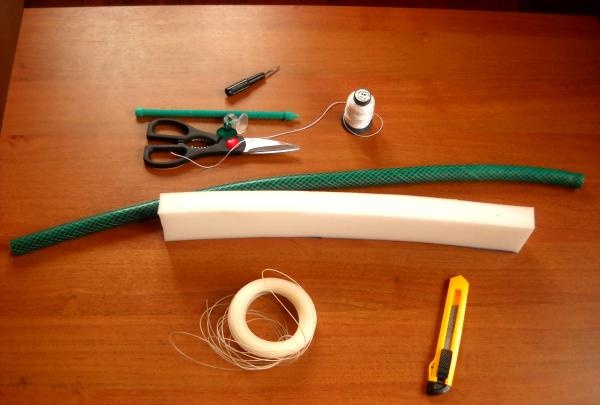
To make a filter you need three main things:
- not very dense foam;
- a piece of PVC garden hose;
- tubular aquarium sprayers.

We cut out a strip of foam rubber measuring 3x3x45 cm. The length can be different and depends on the size of the sprayers and the overall design of the aquarium. And the length x width section should be 1.5-2 cm larger than the diameter of the hose.
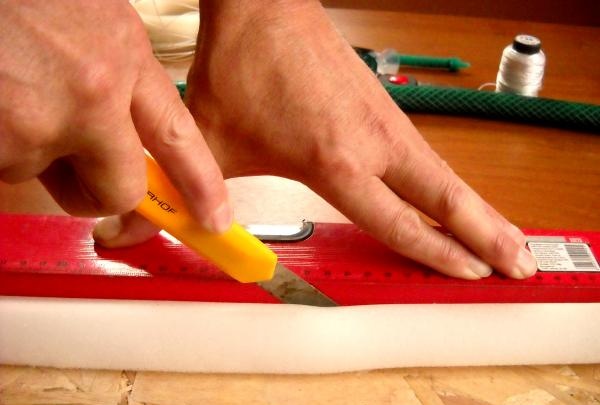
In the strip of foam rubber we cut a groove for the spray nozzles. We make cuts to a depth of 1-1.5 cm.
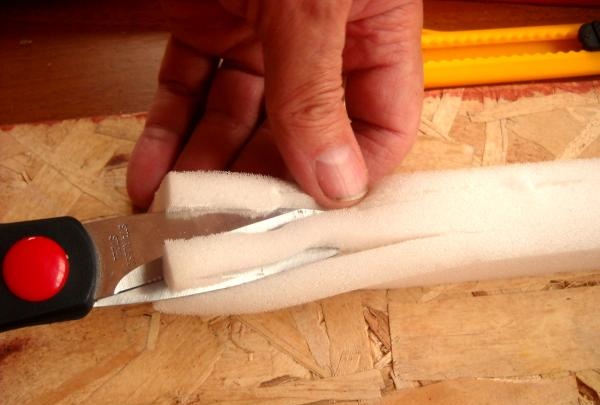
It is convenient to cut the foam rubber from the groove with ordinary scissors.

The result should be something like this. In the future, sprayers will take their place in the groove.
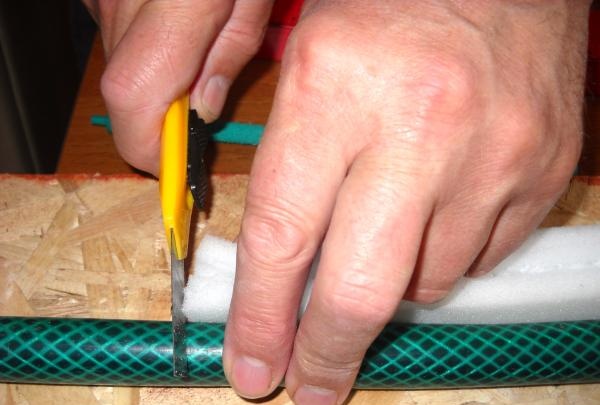
Now we will cut a piece of garden hose according to the size of the foam rubber blank.

Let's cut the hose along its entire length. Do this conveniently and safely with scissors.
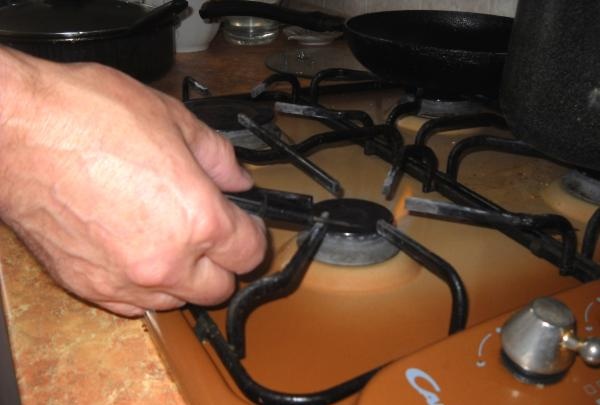
Using a hot awl, make holes in the hose. The awl needs to be heated so that the holes do not tighten.
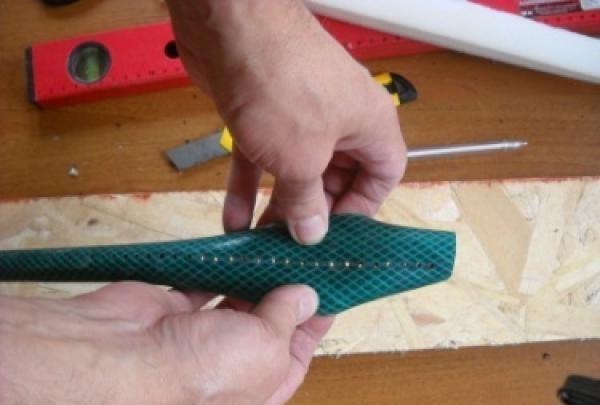
The holes should often be made almost close to each other. You can do two or three rows.
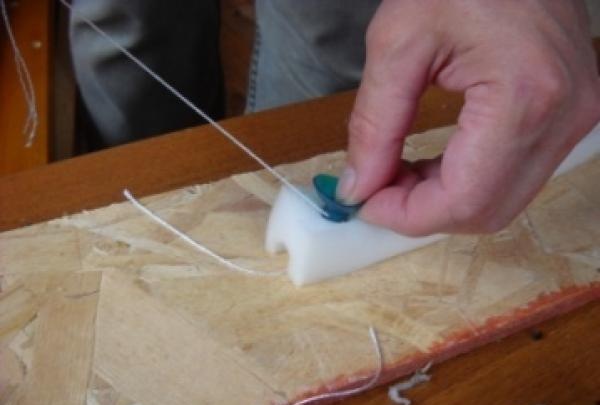
To secure the filter to the bottom of the aquarium, you will need suction cups. We sew them with nylon thread or fishing line to the foam rubber blank.
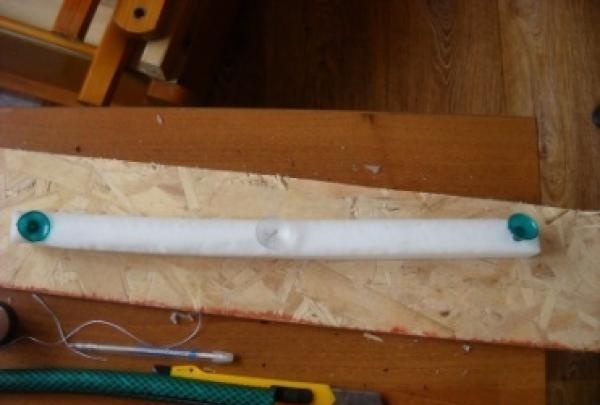
In this case, three suction cups will be enough.

We will place the spray nozzles in the foam groove.
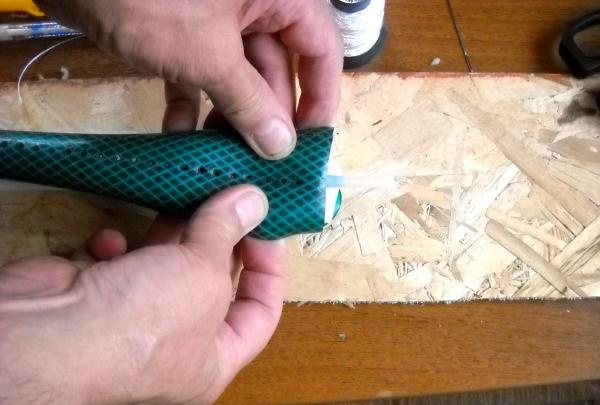
We will put a hose on top of the structure.

You should end up with something similar to the design shown in the photo. We seal the ends with pieces of foam rubber so that the air escapes through the holes at the top.
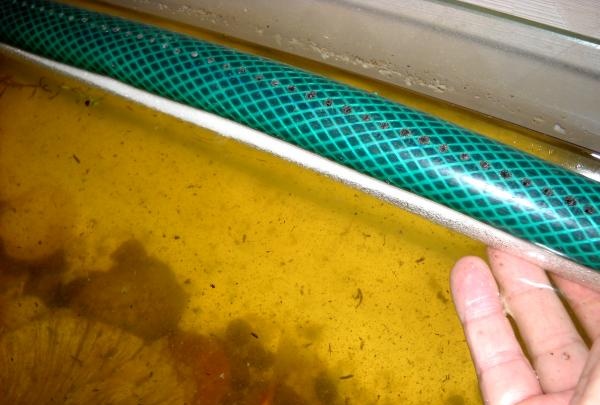
We connect the compressor and install the filter on the bottom of the aquarium.
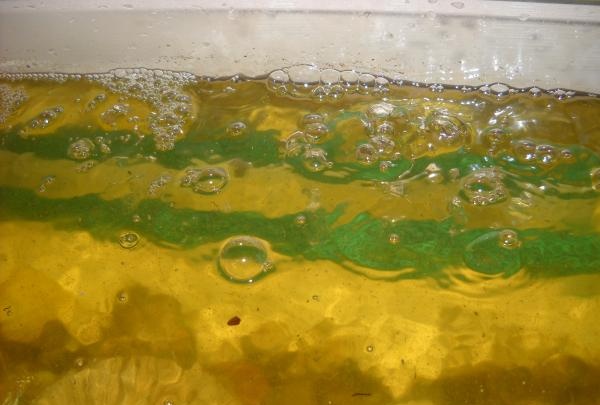
Air bubbles rise to the surface of the water and carry water particles with them. The flow of water carries away the water turbidity and leaves it in the filter elements.
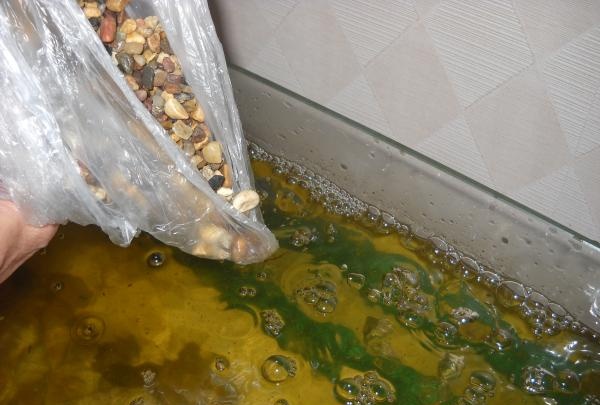
The top of the filter can be decorated with aquarium soil. Soil (coarse sand) will be the main element of the biofilter. Over time, bacteria will settle on the edges of sand grains.These bacteria feed on metabolites that are harmful to fish and plants. Thus, the biological balance of the reservoir will be maintained for a long time. In small aquariums, filters of this design work great and do not spoil the landscape, since they are practically invisible. Air bubbles create a fabulous screen in the background, which only enhances the picture of the underwater world.
